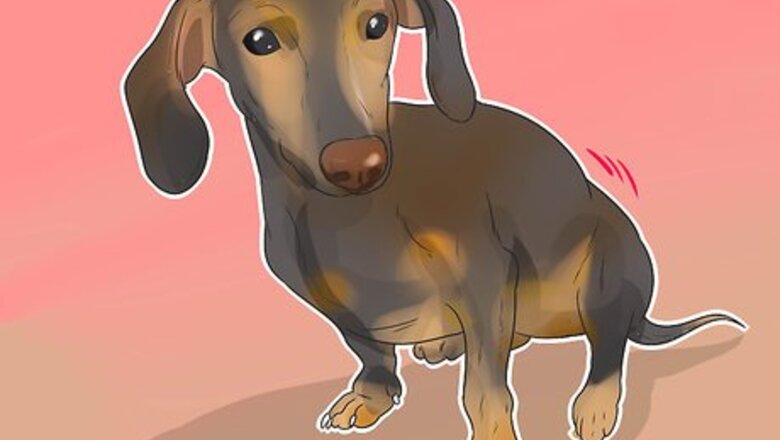
views
Signs of Dachshund Back Problems
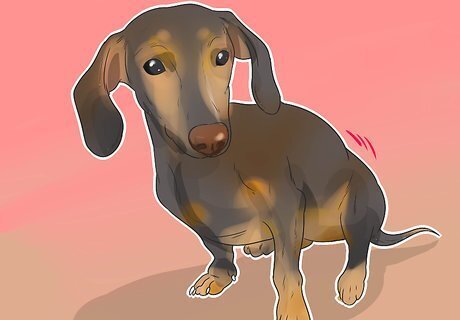
Difficulty walking Back problems can affect your dachshund’s ability to walk normally. For example, IVDD can make your dachshund very wobbly when she walks, or unable to walk at all. Even if your dachshund can walk, the pain caused by IVDD may make her reluctant to move. Spinal trauma or a spinal tumor may make walking difficult or impossible for your dachshund.
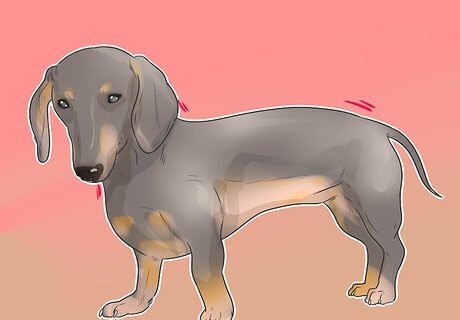
Change in posture If your dachshund has back problems, his posture may change. If he has IVDD, his neck or back muscles will be very tense and he will start hunching these muscles. These tense muscles may start having spasms. The spasms will look like small, fast movements in the muscles. Each spasm could be quite painful for your dachshund. Your dachshund’s posture could be affected in similar or different ways with the other causes of back problems.
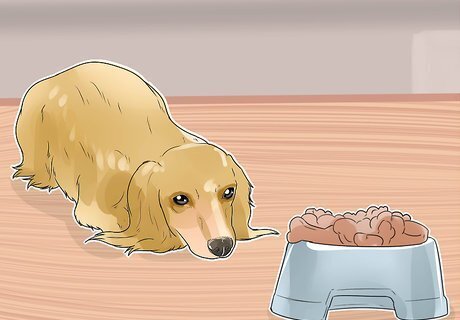
Change in behavior and appetite Your dachshund will probably have pain and discomfort from her back problems. For example, IVDD may cause her to cry out in pain or seem anxious. She may also start eating less and be less willing to do the activities she used to do, such as playing or going out for walks. These changes would reflect a decrease in your dachshund’s quality of life.

Bathroom accidents With severe back problems, a dachshund can lose control of his bladder or intestines, causing inappropriate urination or defecation. This loss of control, called incontinence, is a sign of a neurologic problem—damage to the spinal nerves controlling urination and defecation. Lower back trauma can cause spinal damage.
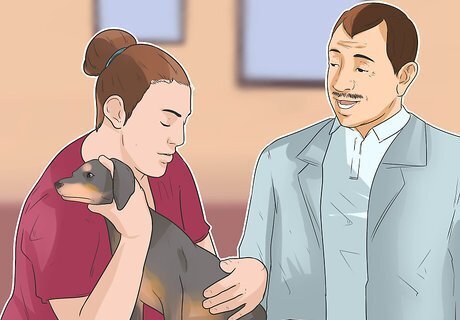
Take your dachshund to your vet if you suspect back issues. To diagnose your dachshund’s back problems, your vet will evaluate your dachshund’s symptoms and perform several tests. For example, if your dachshund’s rear legs are weak or paralyzed, your vet will do a neurologic exam to identify where the spine is damaged. A neurologic exam involves pinching the toe or tail to determine if deep pain can be felt (indicated by a bark or head turn). Imaging studies are very important in diagnosing back problems in dachshunds. Plain x-rays would show vertebrae, but not the discs or spinal cord. Other imaging methods, such as magnetic resonance imaging, computed tomography, or myelography, would be more useful. For myelography, your vet would anesthetize your dachshund and inject a dye into his spine. This dye would make it easier to see the spinal cord on an x-ray. Imaging studies can help your vet determine if trauma or other diseases are causing the back problems. If your vet suspects a spinal infection, they would take a sample of fluid from your dachshund’s spine and have it analyzed to identify the ‘culprit’ organism.
Treating Back Problems Without Surgery
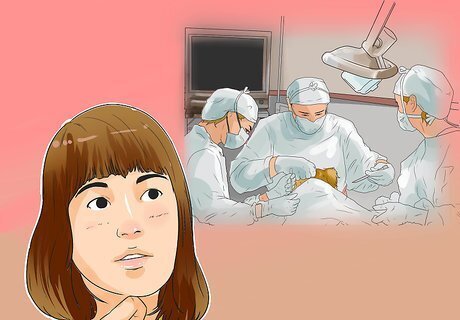
Determine if medical therapy will effectively treat the back problem. Treatment for back problems in dachshunds is either medical (non-surgical) or surgical. Depending on the cause and severity of your dachshund’s back problems, your vet may recommend medical therapy. For example, if your dachshund’s IVDD is mild, then medical therapy would probably work. If she has a spinal infection (e.g., discospondylitis, an infection of the vertebrae and discs), then medical therapy could be effective. Examples of medical therapy are pain reduction, cage confinement, weight management, and antibiotics.
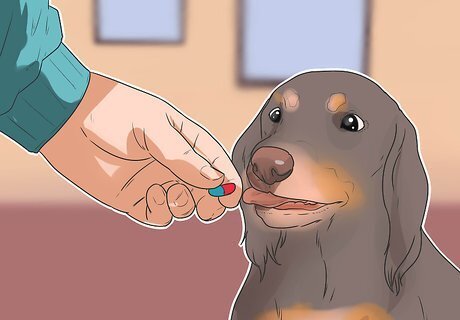
Reduce your dachshund’s pain. Your dachshund will start feeling much better when he’s in less pain. Your vet will prescribe a pain medication, either steroids or non-steroidal anti-inflammatory drugs (NSAIDs), to reduce the pain and inflammation in your dachshund’s back and spine. Reducing your dachshund’s pain will be important, regardless of his specific back problem. Since NSAIDs can cause gastrointestinal bleeding and other digestive problems, they should be given with care and following your vet's instructions and always with or after food. Steroids could cause your dachshund to gain weight, among other problems (e.g., weakened bones, liver problems). Steroids cannot be given with NSAIDs.
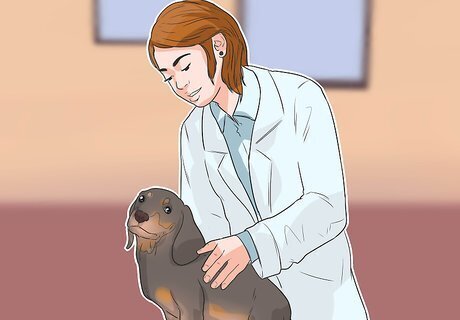
Treat your dachshund’s muscle spasms. If your dachshund has IVDD, her back or neck muscles may spasm. To relieve these spasms, your vet will prescribe a muscle relaxant. Heat and massage can also relieve muscle spasms.
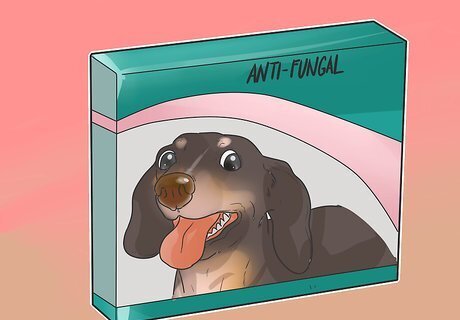
Treat the infection. If your dachshund has a spinal infection, he would need treatment that would kill the culprit organism. This treatment may be an antibiotic, an antifungal medication, or another type of medication, depending on the organism.

Keep your dachshund confined in her cage or crate. Cage or crate confinement is especially important for treating mild cases of IVDD, since the confinement would give the damaged disc(s) a chance to heal. Confinement could last anywhere from two to six weeks. Your vet will advise you on the length of confinement. If you have already crate trained your dachshund, then her confinement shouldn’t be too difficult to manage. If she is not crate trained, try to keep her as still and quiet as possible in her normal sleeping area. Being confined to the cage or crate could be very lonely for your dachshund. Make sure you continue to talk to her and interact with her during her confinement period. Cage confinement may not be necessary for all back problems. Your vet will let you know if your dachshund’s specific back problem will require confinement.
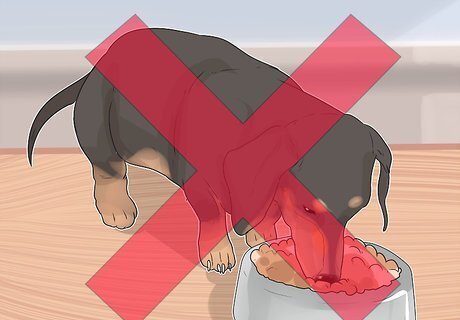
Do not overfeed your dachshund. Excess weight on your dachshund puts more pressure on his back. If you have been feeding more than the recommended amount of food to your dachshund, then you will need to reduce his food intake. Work with your vet to determine how much food your dachshund should eat per day, and measure this amount of food with a measuring cup. Consider eliminating all treats from your dachshund’s diet, especially store-bought dog treats. Specially-formulated weight loss diets could help your dachshund lose weight without missing out on important nutrients.
Surgical Treatment
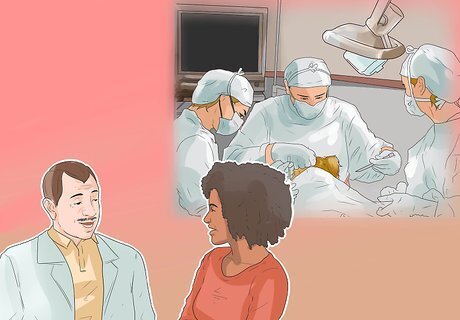
Discuss surgical options with your vet. Surgical treatment may be ideal for some back problems. For example, if your dachshund has IVDD that has not responded to medical therapy, then your vet would perform a surgery to remove the extruded disc material. This would decrease pressure on the spinal cord and allow it to heal. Surgery may be possible to remove a tumor, depending on its size and location. If your dachshund has spinal trauma, immediate surgery may help; however, the trauma (and other injuries) may be too severe for your dachshund to withstand surgery. Your vet will discuss all surgical options with you and let you know if your dachshund would be able to handle the surgery. Your vet may refer you to a veterinary neurosurgeon.

Care for your dachshund after surgery. If your dachshund has surgery, then you will need to care for her at home to ensure she has a full recovery. In general, at-home care involves pain reduction, exercise restriction, and physical therapy (if possible). Realize that a successful surgical outcome (e.g., pain relief, ability to walk) may not be apparent for several days to weeks after surgery. You may have to express your dachshund’s bladder after surgery. Your vet can show you how to do this.
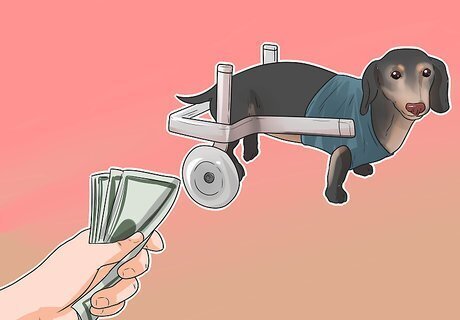
Consider purchasing a doggie wheelchair for your dachshund. If your dachshund’s back problem has left his rear legs paralyzed, he may need a doggie wheelchair so he can get around. As your dachshund recovers from surgery, he may no longer need the wheelchair. Ask your vet for recommendations on wheelchairs and how to use one.
What causes dachshund back problems?
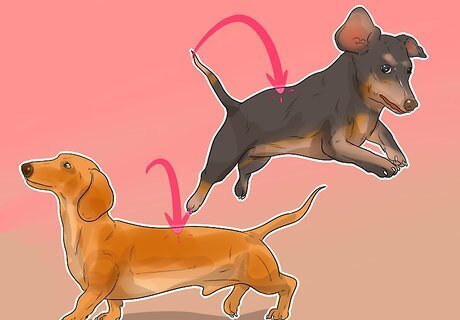
Back problems in dachshunds are actually spinal problems. Intervertebral discs, located between the vertebrae (bones in the spine), contain a gel-like substance that helps them act as shock absorbers. As your dachshund ages, these discs can harden and lose their shock-absorbing ability, causing the gel-like substance to squeeze out and compress his spine, causing pain and other problems. High-impact activities (e.g., running, jumping), excess body weight, and irresponsible breeding can increase the risk of back problems in dachshunds. Although IVDD is very common in dachshunds, back problems in this breed can be caused by infection (e.g., meningitis), spinal tumors, and trauma.



















Comments
0 comment